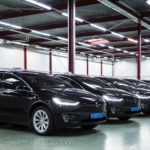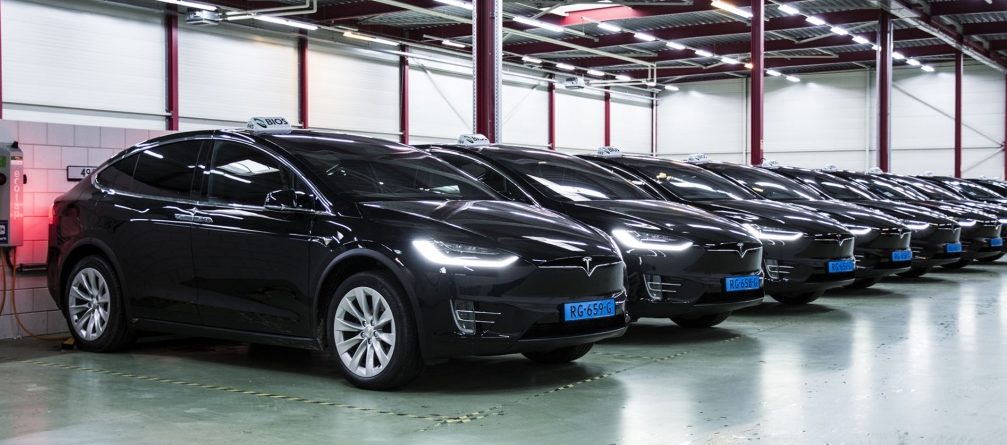
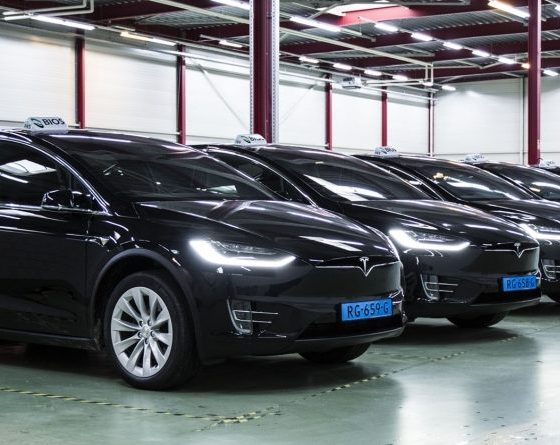
News
Tesla Model X fleet replaces 167 Model S taxis for Netherlands airport
A Tesla Model X fleet has replaced an outgoing line of 167 Model S taxis at the Amsterdam Schiphol airport in the Netherlands. After 155,000-186,000 miles of service from the Model S fleet, BIOS-groep, the airport taxi operator, decided that it was time to retire the luxury sedan and replace it with its larger sibling — the Model X.
Since the 167 Model S entered service back in 2014, the vehicles have saved more than 2,500 tons of C02 per year. According to BIOS-groep Managing Director Stef Hesselink, the luxury sedans have really held up well during their active years of service, especially considering that each vehicle conducts thousands of rides every year. Hesselink noted, however, that the superior seating capacity of the Model X became a notable point in the company’s decision to retire its Model S fleet and replace it with the electric SUV.
“The Model S have held up beautifully since they’ve been put to work in 2014, having an average of over 250,000-300,000 km (155,000 – 186,000 miles) on each odometer by the end of 2017. Taxis and other commercial vehicles have a very different usage pattern and could drive up to over 100,000 km (62,000 miles) per year.
“BIOS-groep carries out more than 170,000 rides per year to and from Schiphol, so the time came to renew the all-electric fleet. We loved Model X, and the ability to transport up to seven adults as well as their luggage coupled with the high residual value of the Model S, made a very appealing case,” Hesselink wrote.
BIOS-groep would follow a charging system that enables its Model X fleet to charge overnight. Mostly, the airport taxis are charged using conventional AC chargers at their own depot. During operation peak times, the company employs a DC fast-charging solution provided by Tesla, which charges the electric cars at 60 kW. It should be noted, however, that BIOS’ DC fast chargers are separate from Tesla’s Supercharger network, which has an output of 120 kW.
- BIOS-groep’s Model X taxi fleet at the Amsterdam Schiphol airport in the Netherlands. [Credit: Tesla]
- BIOS-groep’s Model X taxi fleet at the Amsterdam Schiphol airport in the Netherlands. [Credit: Tesla]
While BIOS-groep’s Model S fleet is being retired after 186,000 miles on the road, other Tesla taxi services have covered far larger distances in the past. Back in 2016, we reported on Tesloop, a Tesla-only intercity shuttle service for Southern California and Las Vegas residents. As of August 29, 2017, the company stated that their Model S had already racked up 438,000 km (300,000 miles) in the vehicle’s odometer.
Ari Nyyssönen, a Finnish taxi driver, also reported nearly similar figures in his Model S taxi. As of August last year, Nyyssönen noted that his car had already traveled an impressive 400,000 kilometers (250,000 miles). Considering the performance of the vehicle and its durability, Nyyssönen stated that there is a good chance his Model S can breach the 1 million km (621,000-mile) mark.
With the lifespan of Tesla’s drivetrain and the reliability of its battery in mind, there is a good chance that BIOS-groep’s Model S fleet still have a lot of mileage left in them.

News
Tesla Semi factory looks almost complete during Thanksgiving weekend
Based on recent drone videos, the Tesla Semi factory looks practically ready to start operations.
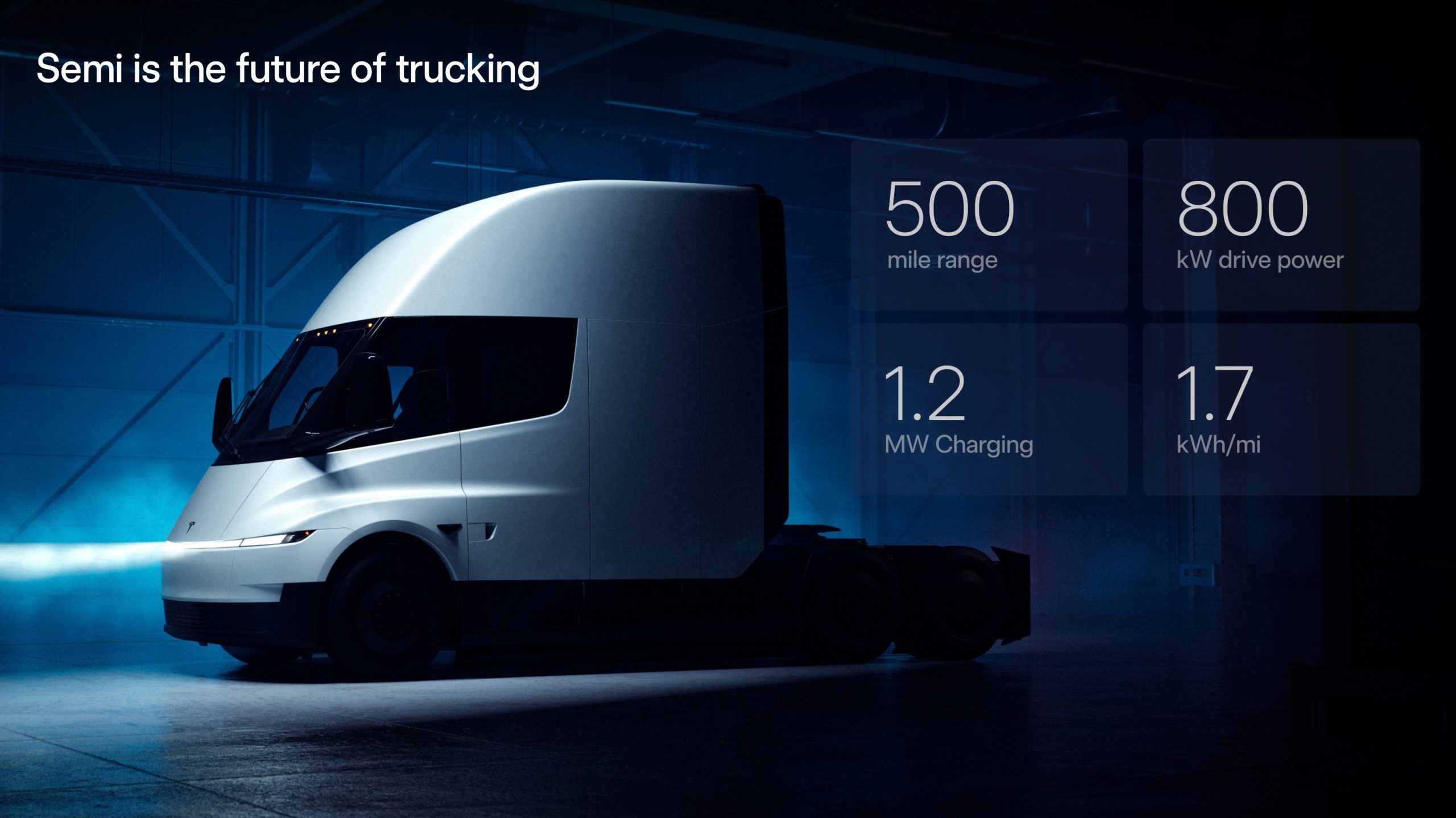
It appears that the Tesla Semi factory near Giga Nevada is already hard at work preparing for the initial production of the Class 8 all-electric truck. This was, at least, hinted at in a recent drone flyover of the facility from a longtime watcher.
The Tesla Semi factory after Thanksgiving
Drone operator and Tesla Semi advocate @HinrichsZane recently shared some footage he captured of the upcoming facility during the Thanksgiving weekend. Based on his video, it appears that Tesla gave its employees in the area the weekend off. One thing is evident from the video, however, and that is the fact that the Tesla Semi factory looks practically ready to start operations.
The Tesla Semi watcher did point out that the electric vehicle maker is still busy bringing in production equipment into the facility itself. Once these are installed, it would not be surprising if initial production of the Tesla Semi begins.
A new Tesla Semi
The upcoming completion of the Tesla Semi factory near Gigafactory Nevada seems all but inevitable in the coming months. What would be especially interesting, however, would be the vehicles that would be produced on the site. During Elon Musk’s presentation at the 2025 Annual Shareholder Meeting, a glimpse of the production Tesla Semi was shown, and it looks quite a bit different than the Class 8 all-electric truck’s classic appearance.
As could be seen in the graphic from the CEO’s presentation, the updated Tesla Semi will feature slim lightbar headlights similar to the new Tesla Model Y, Cybertruck, and the Cybercab. Tesla also teased a number of aerodynamic improvements that increased the truck’s efficiency to 1.7 kWh per mile. Extended camera units, seemingly for FSD, could also be seen in the graphic.
News
Tesla scores major hire as Apple scientist moves to Optimus team
Chen, who advanced from individual contributor to technical lead during his time at Apple, noted that he was blown away by Tesla’s efforts and synergy.
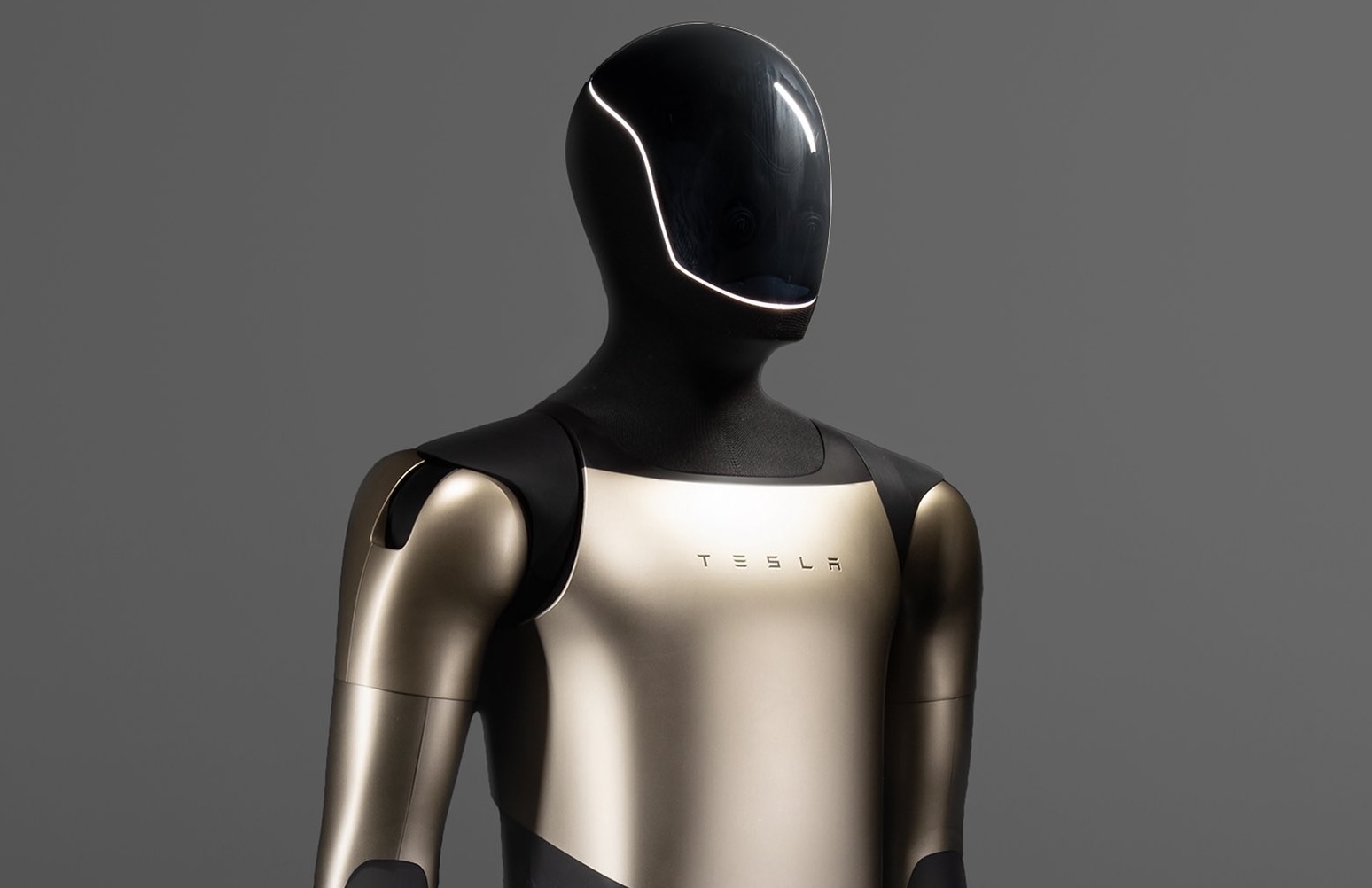
Former Apple research scientist Yilun Chen has left the tech giant to join Tesla’s Optimus AI team. Chen, who advanced from individual contributor to technical lead during his time at Apple, noted that he was blown away by Tesla’s efforts and synergy.
Apple veteran closes a major chapter
In a farewell note, Yilun Chen reflected on his tenure at Apple as a period defined by rapid growth and exposure to notable internal projects, some of which remain unreleased. His roles spanned engineering, research, early product incubation, and hands-on prototyping, allowing him to build expertise across both mature and emerging teams.
Chen credited mentors, colleagues, and cross-functional collaborators for shaping his trajectory, calling the experience unforgettable and emphasizing how each team taught him different lessons about scaling technology, guiding product vision, and navigating fast-moving research environments. “Each role has offered me invaluable unique lessons… My deepest gratitude goes to my colleagues, mentors and friends,” he wrote.
Tesla’s Optimus lab secured the hire
Chen said the move to Tesla was driven by the momentum surrounding Optimus, a humanoid robot powered by LLM-driven reasoning and Physical AI. After visiting Tesla’s Optimus lab, he admitted that he was “totally blown away by the scale and sophistication of the Optimus lab and deep dedication of people when I got to visit the office.”
His first week at Tesla, he noted, involved spontaneous deep-tech discussions, a flat team structure, rapid prototyping cycles, and what he called a “crazy ideas with super-fast iterations” culture. Chen emphasized that the team’s ambition, as well as its belief that humanoid robots are now within reach, creates an energy level that feels aimed at changing the world.
“You can feel the energy to change the world here,” he wrote in a post on social media.
Elon Musk
Elon Musk gives nod to SpaceX’s massive, previously impossible feat
It was the booster’s 30th flight, a scenario that seemed impossible before SpaceX became a dominant force in spaceflight.
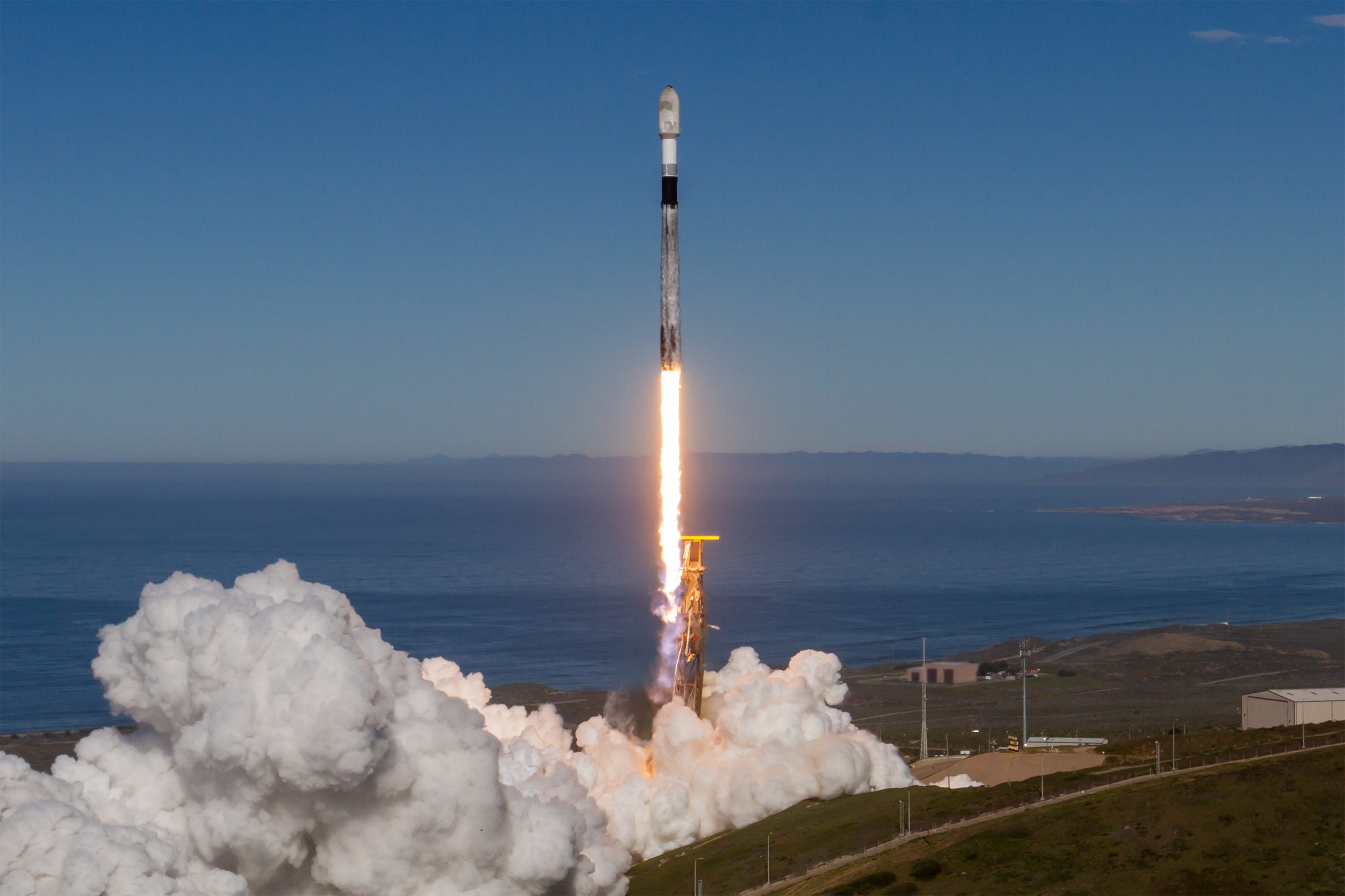
Elon Musk gave a nod to one of SpaceX’s most underrated feats today. Following the successful launch of the Transporter-15 mission, SpaceX seamlessly landed another Falcon 9 booster on a droneship in the middle of the ocean.
It was the booster’s 30th flight, a scenario that seemed impossible before SpaceX became a dominant force in spaceflight.
Elon Musk celebrates a veteran Falcon 9 booster’s feat
SpaceX completed another major milestone for its Smallsat Rideshare program on Friday, successfully launching and deploying 140 spacecraft aboard a Falcon 9 from Vandenberg Space Force Base. The mission, known as Transporter-15, lifted off two days later than planned after a scrub attributed to a ground systems issue, according to SpaceFlight Now. SpaceX confirmed that all payloads designed to separate from the rocket were deployed as planned.
The Falcon 9 used for this flight was booster B1071, one of SpaceX’s most heavily flown rockets. With its 30th mission completed, it becomes the second booster in SpaceX’s fleet to reach that milestone. B1071’s manifest includes five National Reconnaissance Office missions, NASA’s SWOT satellite, and several previous rideshare deployments, among others. Elon Musk celebrated the milestone on X, writing “30 flights of the same rocket!” in his post.
Skeptics once dismissed reusability as unfeasible
While rocket landings are routine for SpaceX today, that was not always the case. Industry veterans previously questioned whether reusable rockets could ever achieve meaningful cost savings or operational reliability, often citing the Space Shuttle’s partial reusability as evidence of failure.
In 2016, Orbital ATK’s Ben Goldberg argued during a panel that even if rockets could be reusable, they do not make a lot of sense. He took issue with Elon Musk’s claims at the time, Ars Technica reported, particularly when the SpaceX founder stated that fuel costs account for just a fraction of launch costs.
Goldberg noted that at most, studies showed only a 30% cost reduction for low-Earth orbit missions by using a reusable rocket. “You’re not going to get 100-fold. These numbers aren’t going to change by an order of magnitude. They’re just not. That’s the state of where we are today,” he said.
Former NASA official Dan Dumbacher, who oversaw the Space Launch System, expressed similar doubts in 2014, implying that if NASA couldn’t make full reusability viable, private firms like SpaceX faced steep odds.


